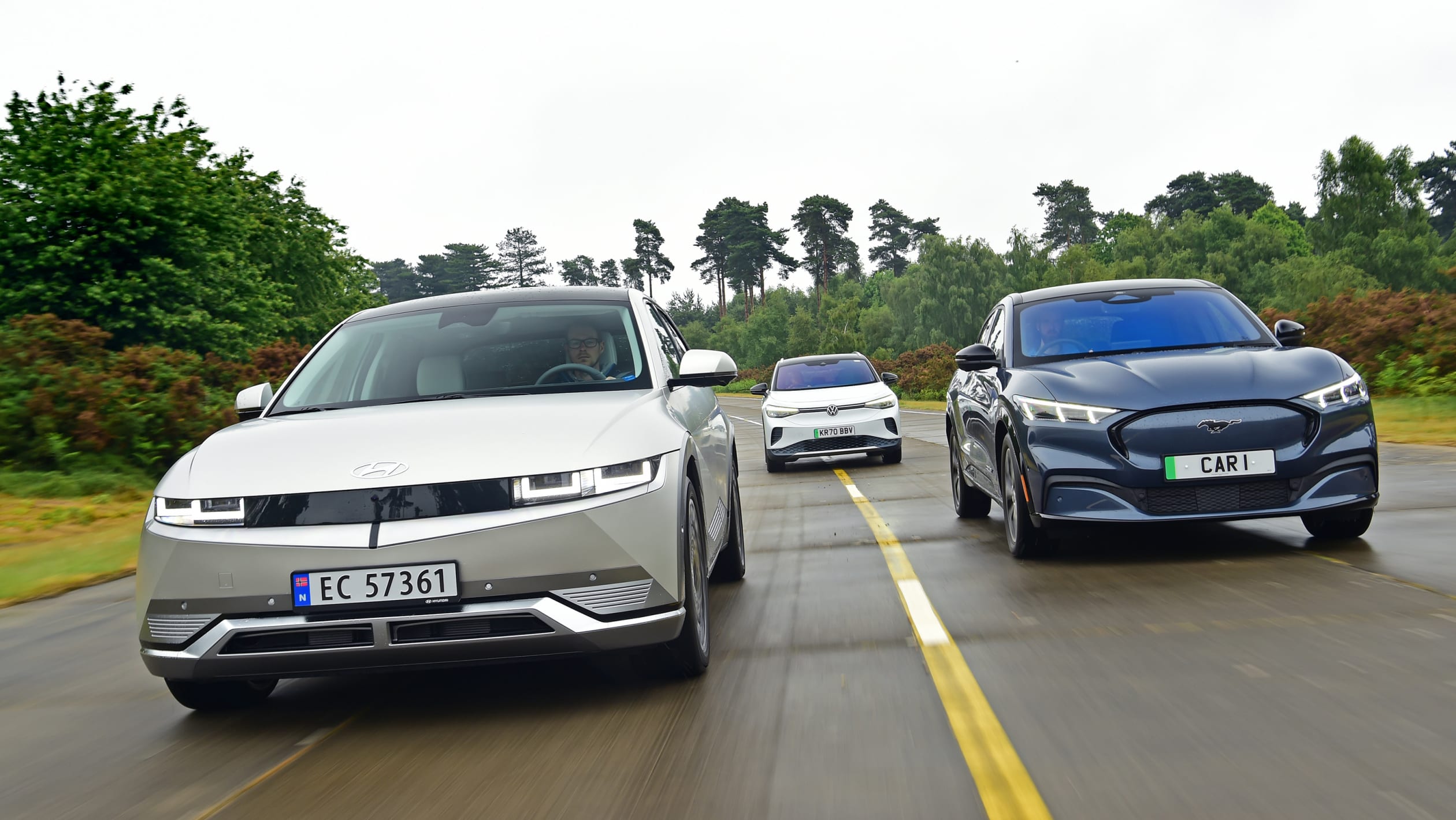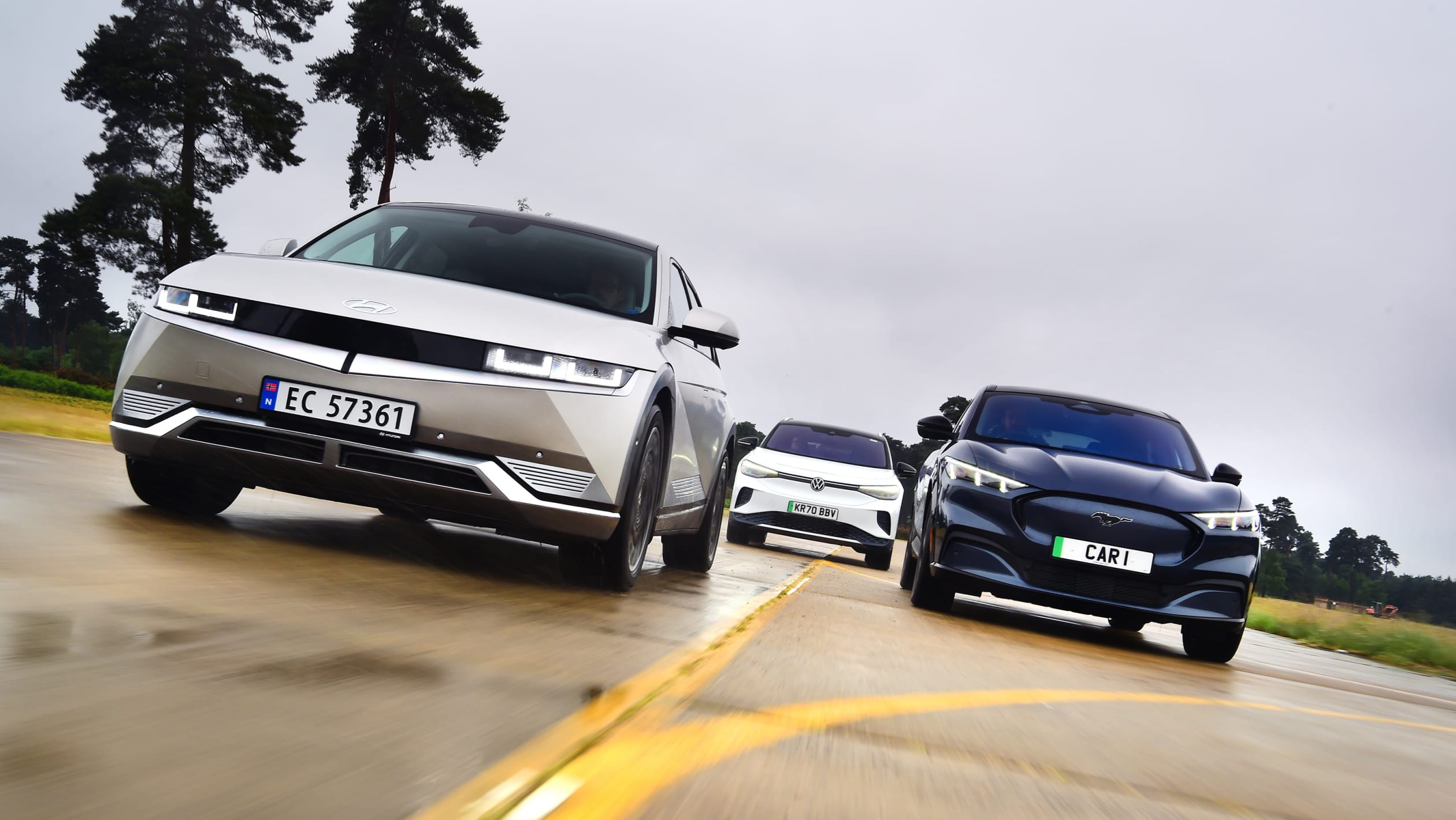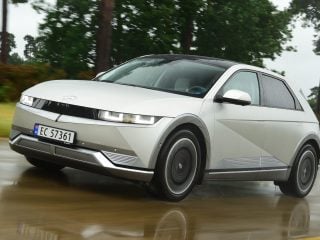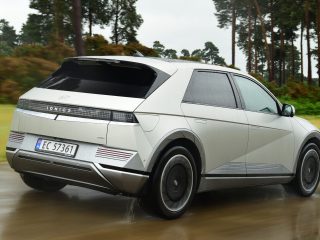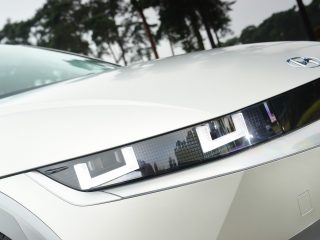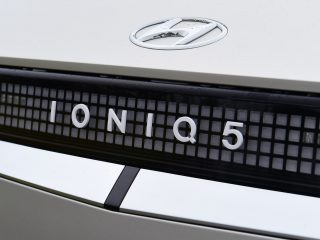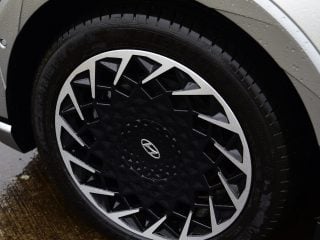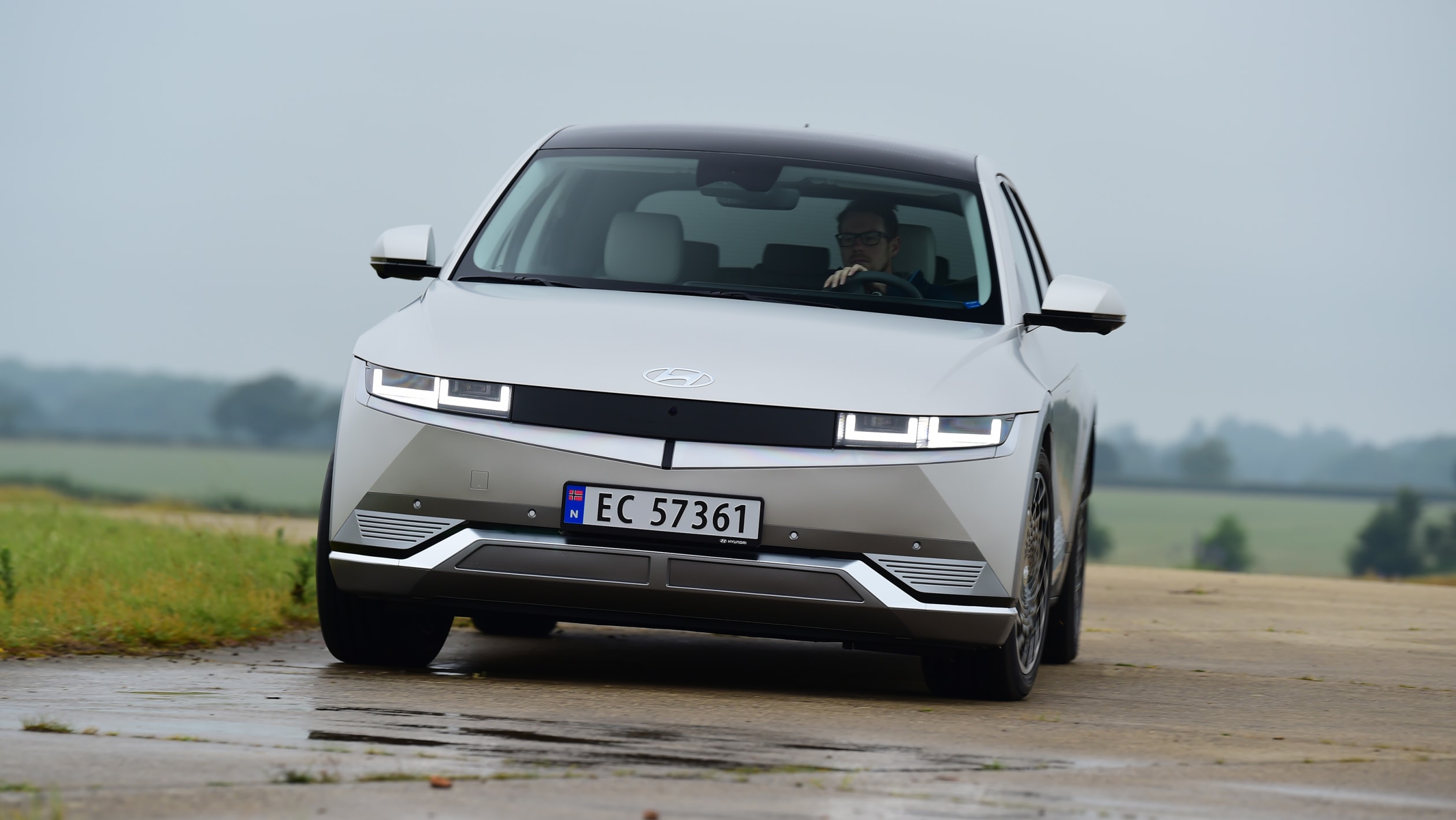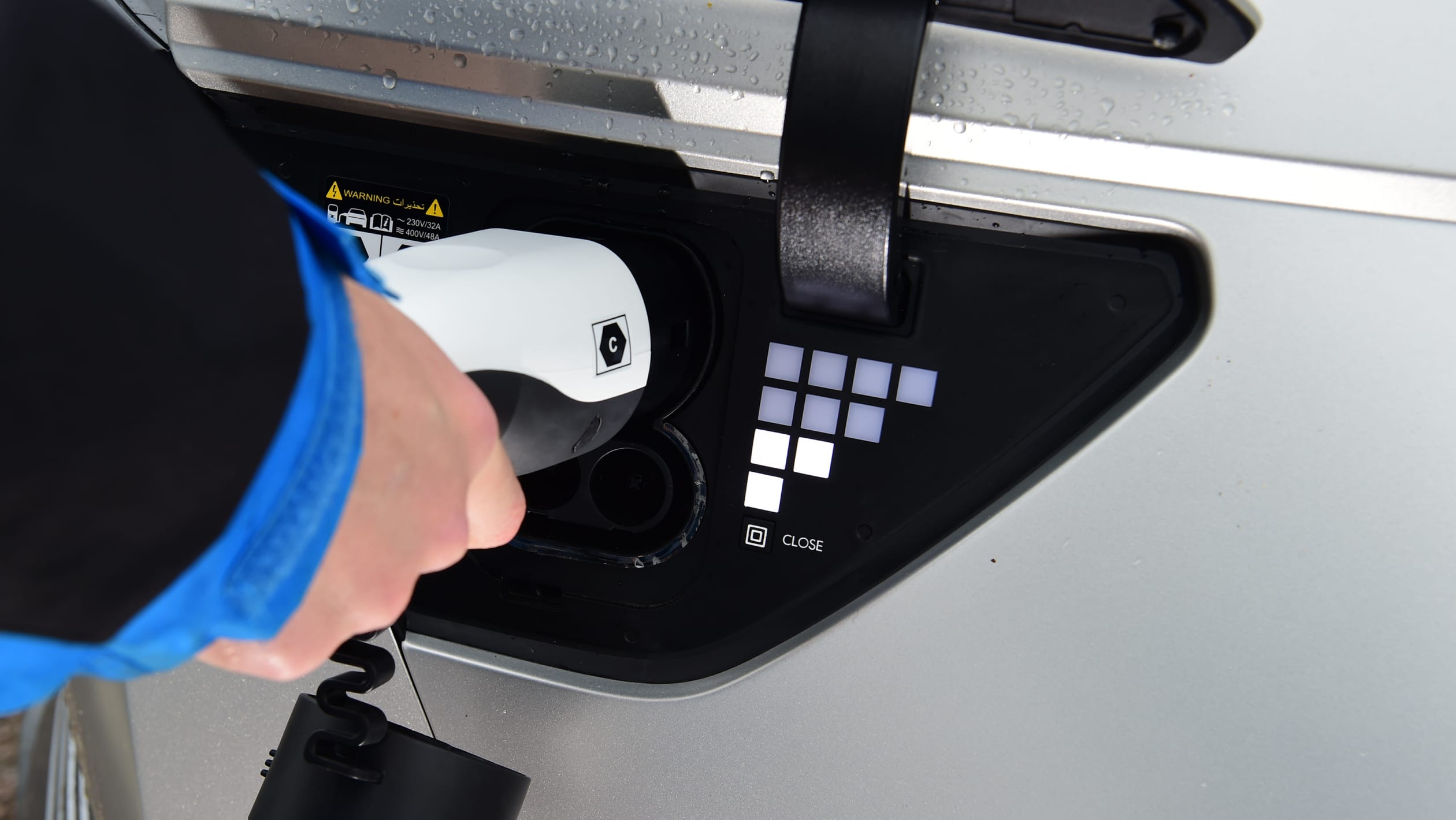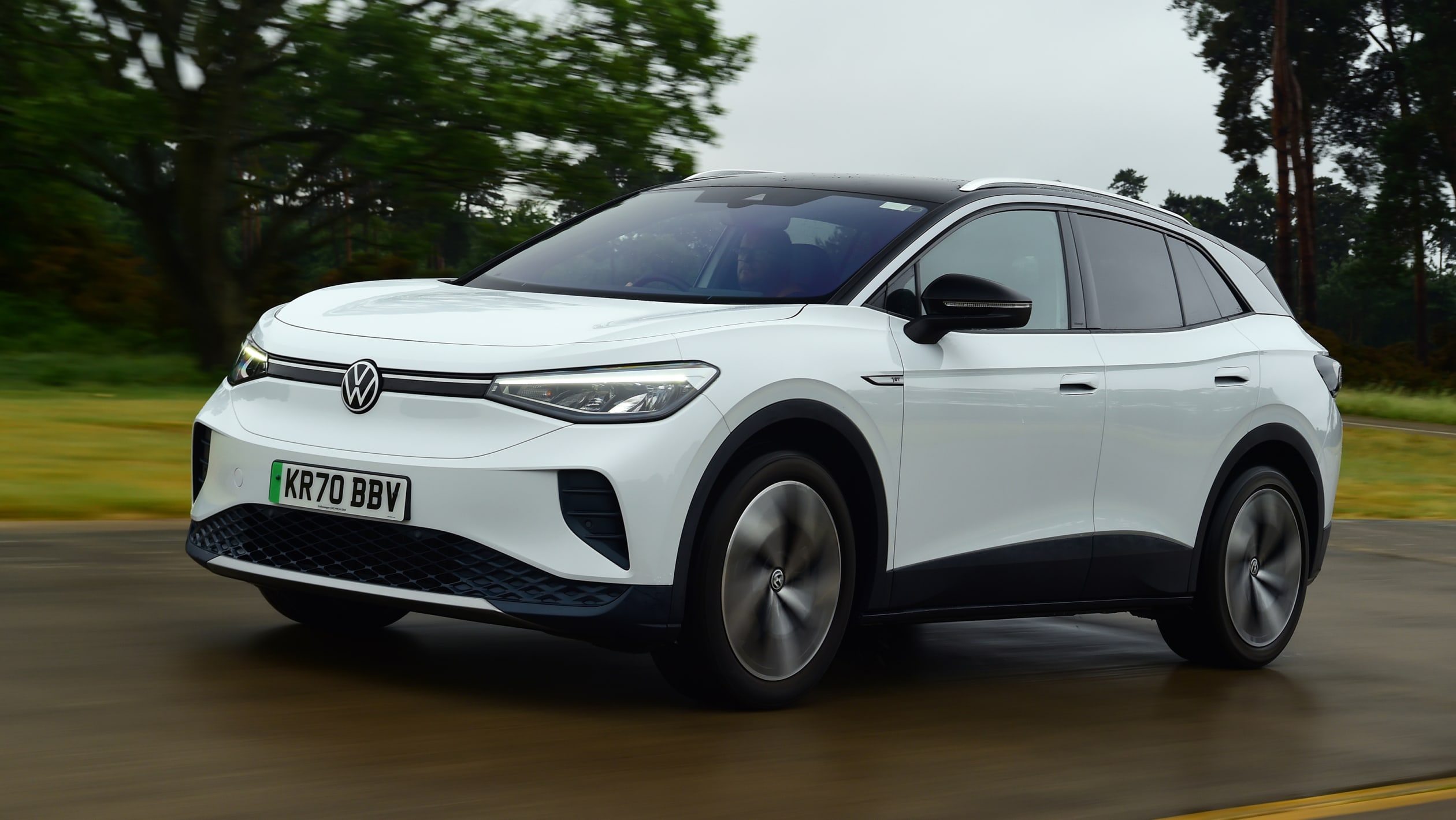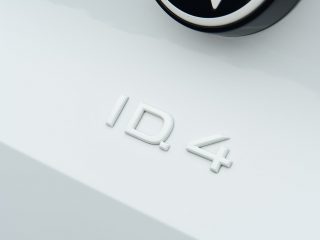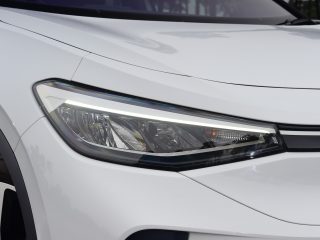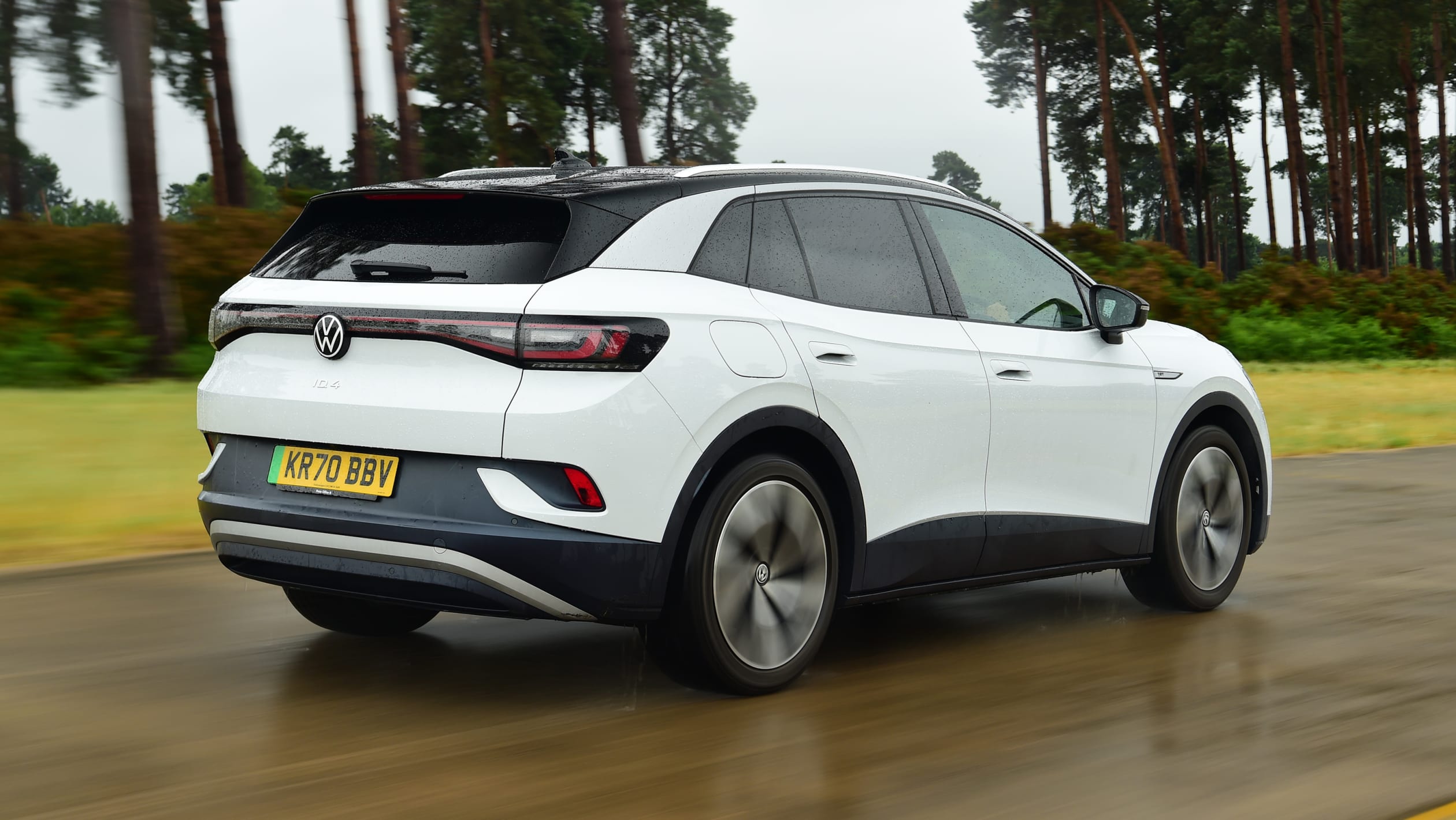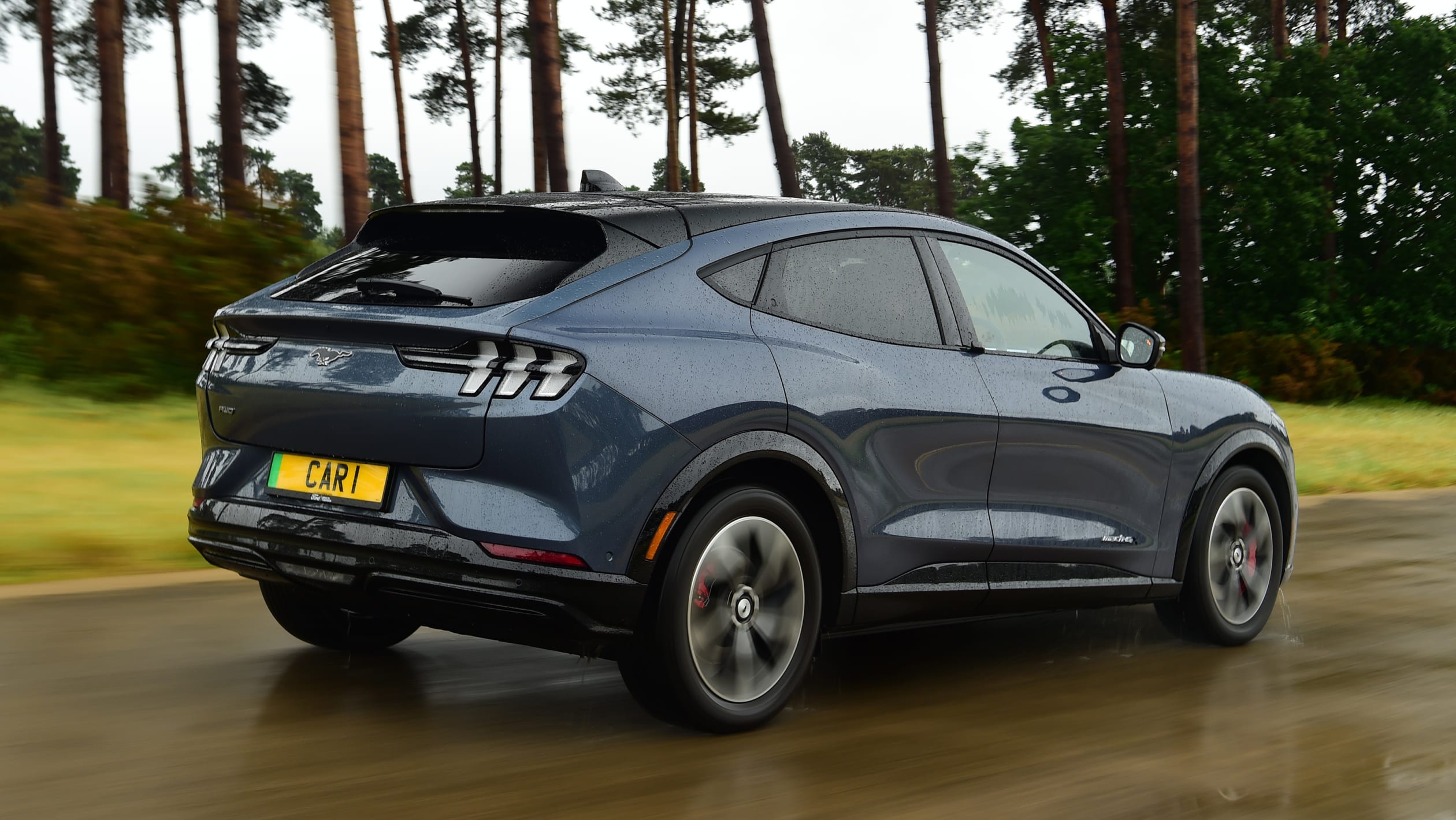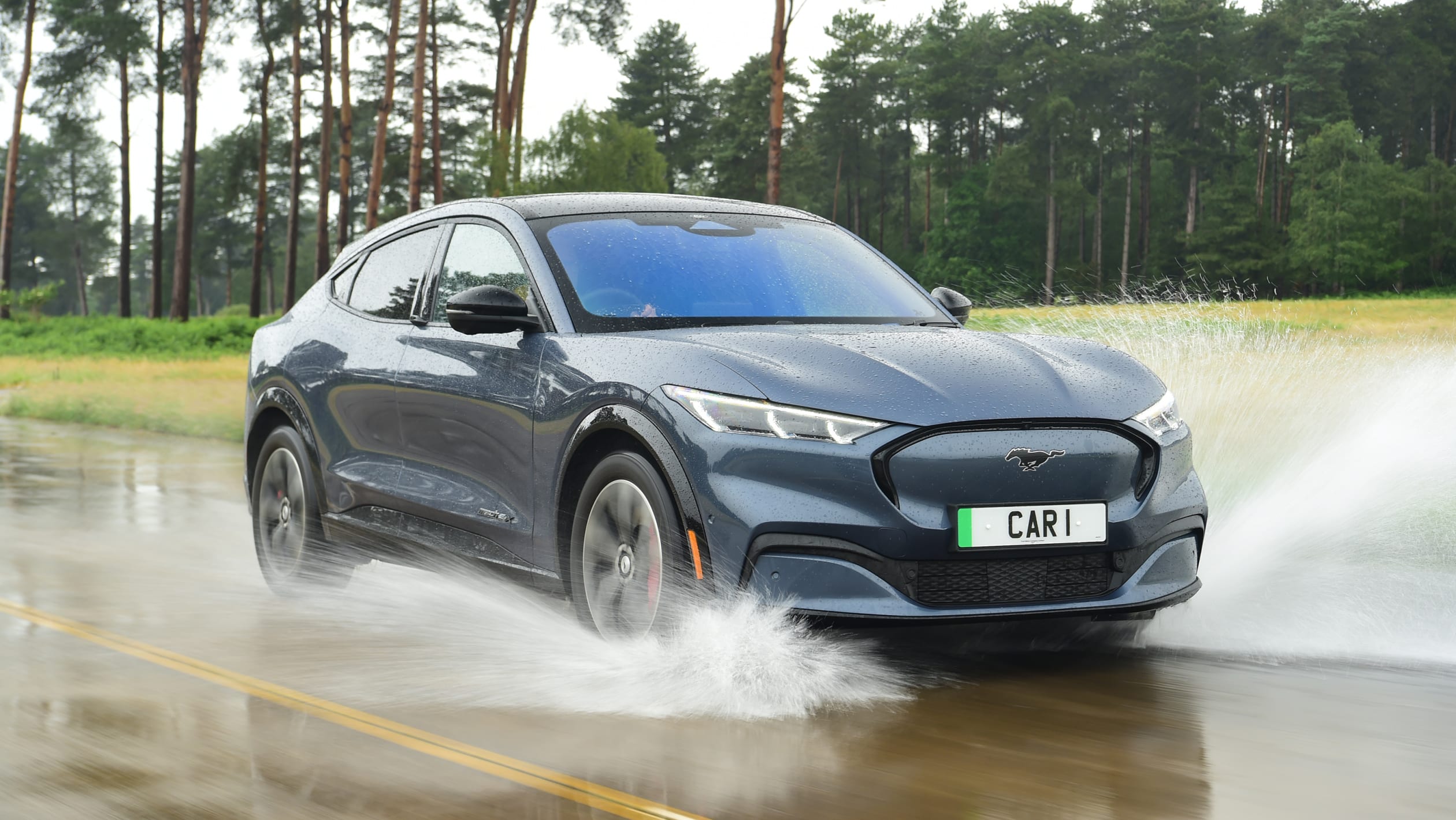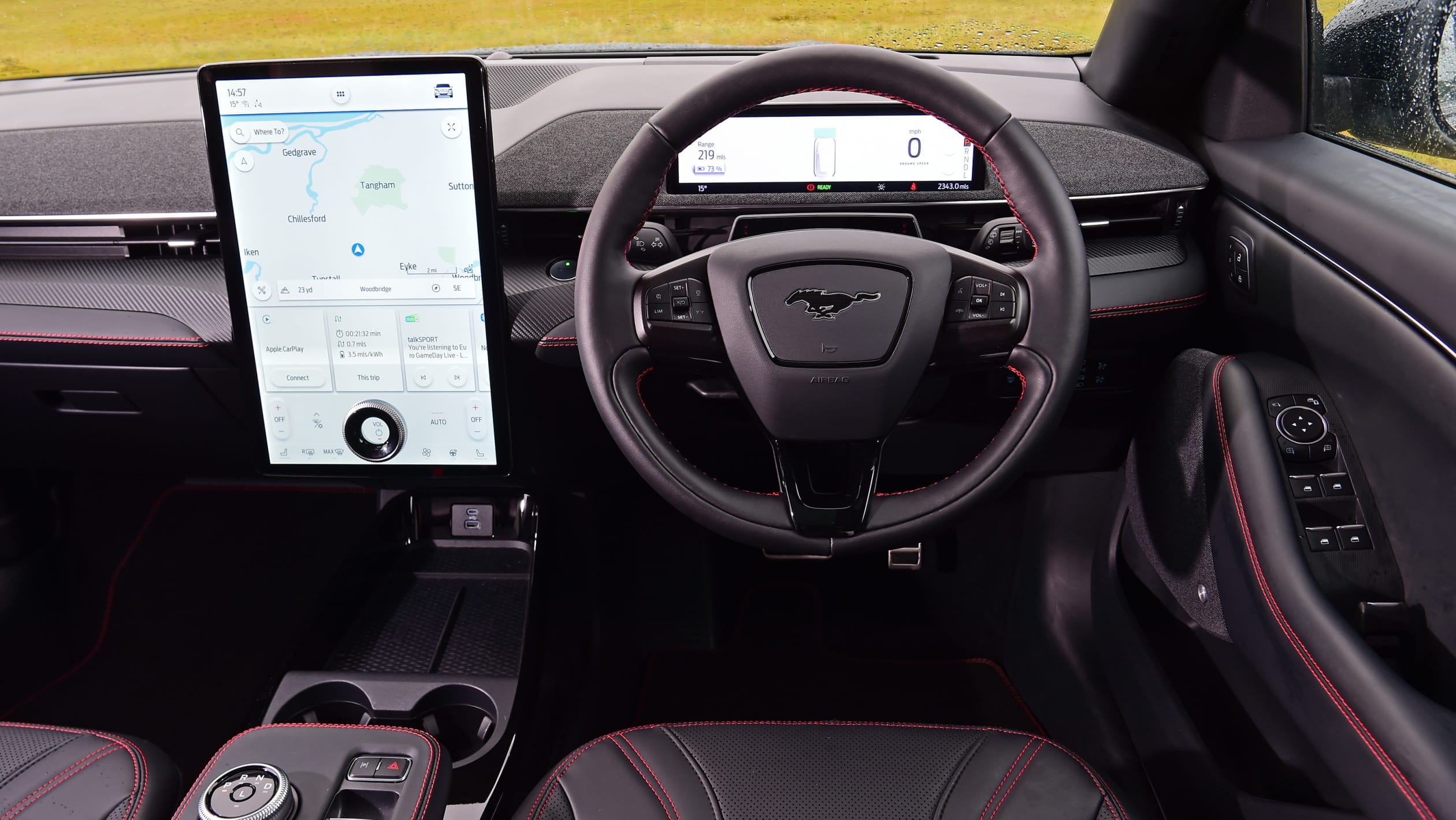Can Hyundai’s incoming Ioniq 5 electric car provide substance to match its style? We test it against the Volkswagen ID 4 and Ford Mustang Mach-E to find out.
What you see here is the future for three of the biggest car brands in the world. Each of these all-electric models sits on a platform specifically designed for electrification and marks a significant step on the road to zero-emissions driving.
Hyundai’s newest Ioniq brand that caters for EVs only will arrive in Australia later this year. First stop is the Ioniq 5. Ford’s Mach-E and VW’s ID 4 are not yet confirmed locally, but our European colleagues who have early access to an Ioniq 5 reckon they are the benchmarks, so we’ve put them up against each other to see just how good Hyundai’s new EV is.
The Ioniq name will be familiar, but the tech-packed 5 is a world away from the plain-looking hatchback that shares its tag. It’s a crossover through and through, because it blends elements of hatchback and SUV styling – a lot like the Mustang.
We’ve already rated the Mach-E highly, so it’s the model to beat here. It’s similar in some ways to the sports car of the same name, but is wildly different in many others.
The VW ID 4 takes the formula of the ID 3 hatch and transfers it to an SUV layout, and it wraps some very forward-thinking tech into a familiar VW style, making it ideal for newcomers to the world of electric cars.
Here we’ll find out which of the three all-important new electric cars is the most convincing.
Hyundai Ioniq 5
Over the coming years, Hyundai will release a new range of electric cars using the E-GMP platform first seen here in the Ioniq 5. Smaller and larger models are planned, and as with most EV platforms, the batteries are under the floor for a low centre of gravity.
The Ioniq 5 is available in a few different configurations. There are two batteries, three power outputs and rear or four-wheel drive. Here the twin-motor, four-wheel-drive model with a 77kWh battery has an official range of 480km, which is less than the VW ID.4’s 499km claim, but the Hyundai has over 75kW more power and loads of torque: there’s 605Nm in total. That means it’s the fastest here, taking just 5.2 seconds to go from 0-100kph. The lower-spec rear-wheel-drive Ioniq 5 with 160kW takes 7.4 seconds, which puts it between the Ford and VW.
What’s most appealing about the Ioniq 5 is its charging tech. An 800-volt electrical system allows up to 220kW charging, and in the real world this means that when the car is hooked up to a compatible outlet, the battery can go from 10 to 80 per cent capacity in less than 20 minutes. We hooked the Ioniq 5 up to a new 350kW-capable charging point, and from a nearly empty battery it had topped up to just over half capacity in less than 10 minutes. As more high-voltage chargers appear in Australia, long trips will be even less of an issue in the Hyundai. At a more common 50kW point, it takes about an hour to add the same range.
The Ioniq 5’s interior is a real strong point. Optional light-coloured materials won’t suit everyone, but the quality inside is superb – much better than in either rival. Smart touches include front seats that recline almost fully flat, allowing you to nap while recharging.
Driving
The Ioniq’s relaxing cabin suits the way that it drives – it’s much more of a calm cruiser than a sporty EV like the Ford. The seats are soft and it’s quiet on the move; there’s very little wind or road noise at speed.
On the highway the Hyundai is settled and comfortable, and the Highway Drive Assist Level 2 system helps make things even more relaxing by keeping you in your lane automatically. It’s a very natural-feeling set-up that slows for upcoming traffic and steers for you gradually. It combines with lane- departure warning tech that uses a digital image of the car to inform the driver of any stray manoeuvres.
At low speeds, the 20-inch wheels fitted to our test car meant there was a little fidget over potholes and bumps. The Hyundai isn’t as firm as the Ford around town, but conversely the Mustang is more fun to drive on a twisty road. The Hyundai’s numb steering and light control weights mean it’s not very engaging. It is easy to drive, though, while on the move it remains composed and has plenty of grip.
Performance is strong, as with pretty much all EVs. It’s punchy at low speeds and then trails off the faster you go. Throttle response sits somewhere between the Ford’s sharp pedal and the much softer VW.
Economy: The Ioniq 5 returned economy of 5.5km per kWh which gives a theoretical driving range of 398km.
Practicality
The Ioniq feels the most spacious of these three, partly because of the clever design of the dashboard and the flat floor that means there’s plenty of foot space. A long wheelbase pays dividends here; rear legroom beats even the impressive ID 4 and is on a par with a luxury saloon. The rear doors are very large, though – worth bearing in mind when parking in tight spots.
The front seats fold almost flat and have a calf support, although some drivers might find that it doesn’t even touch their legs in the fully raised position. There’s a small front boot for the charging cables, although in four-wheel-drive models it’s small and not that useful for anything else.
The main boot is really wide and it’s easy to access, thanks to the automatic tailgate. There’s 527 litres of space with the seats in place, but while the floor itself is quite high and shallow, the area it covers is huge. If bulkier loads need to be carried, then the parcel shelf can be rolled back or removed completely.
The rear seats can be moved back and forth to improve legroom or boot space, and there’s plenty of room for passengers in the back as a result. Storage is useful, too, and overall the cabin is very well designed and user-friendly.
Testers’ notes
“The Hyundai Ioniq 5 has a very long wheelbase for its size, which improves interior space and helps to allow those dramatic and unique exterior looks.”
Volkswagen ID 4
Here we’re testing a Volkswagen ID 4 in 1st Edition Pro Performance trim, which is fitted with the largest (77kWh) battery available and offers a claimed range of almost 500km.
Design & engineering
As with the other cars in this test, the ID 4 uses a platform that’s built exclusively for electric power. In this instance it’s VW’s MEB architecture, which also underpins the ID 3, Audi Q4 e-tron and many more forthcoming VW Group cars. The platform can accommodate a variety of battery sizes, and the ID 4 is offered with 52kWh or 77kWh packs.
The car’s 126kW charging system is quicker than the Ford’s, but not as fast as the Hyundai’s. It means the ID.4 can charge from flat to 80 per cent capacity in 34 minutes, or eight hours and 15 minutes via an 11kW home wallbox. The big battery means it has the longest claimed range here, at 499km – although this will vary on the type and style of driving. Plenty of highway kays (the least flattering for an EV) resulted in a range closer to 422km.
The single-motor VW is rear-wheel drive only – four-wheel drive isn’t available yet. It’s also the least powerful of these three, with 150kW and 310Nm of torque. This means 0-100kph takes 8.5 seconds – behind its rivals, but still perfectly adequate.
In the past, VW has earned a reputation for building neatly designed, high-quality cabins – so it’s disappointing that the ID 4 falls behind its rivals here. Material quality is so-so, while the minimalist design is neither as elegant nor as practical as in the Hyundai. Virtually everything is controlled through a fiddly touchscreen, and the featureless dash just doesn’t have enough visual flair. At least the screens, both on the dash and behind the steering wheel (which adjusts with the steering column), look sharp and have plenty of features.
Driving
While many combustion-engined cars have their own distinct characters, EVs all tend to deliver their power in the same way. You get a big shove of torque from the moment you hit the pedal at a standstill, and this dwindles as your speed rises. The ID 4 has its own personality in this area, though, because it artificially limits torque to smooth out acceleration. It means the VW doesn’t feel as fast as its rivals, despite having more than 240kW.
This is reflected in the car’s 0-100kph time of 8.5 seconds, although the ID 4 doesn’t even feel as fast as that suggests, because you don’t get the typical electric car shove, even on full throttle. However, the result is that it’s easier to be smooth, which feels much more in keeping with how the car wants to be driven.
The VW’s light, feel-free steering and soft ride mean that it’s much more focused on being easy and comfortable to drive, rather than enjoyable and satisfying. Its low-speed ride is the best of the three, and the car remains equally composed on longer highway trips. The seats are great, and the adaptive cruise control is smooth and makes long trips a breeze.
All this means the driving experience feels rather detached. This will be a minus point for enthusiastic drivers, yet this is exactly what most people want; the car just does the job and they can get on with their day. Most importantly of all, the ID 4 will feel instantly familiar to any VW driver, so the new powertrain shouldn’t alienate any EV newcomers.
Economy: The VW ID 4 returned economy of 5.5km per kWh which gives a theoretical driving range of 422km.
Practicality
As well as being comfortable and relaxing, the VW scores highly for practicality. It has the largest boot of the three cars here, at 543 litres with the seats in place. Fold them flat, and its 1,575-litre total is big enough for bikes or trips to the dump. There’s separate storage for the charging cables, too.
Rear-seat passengers have plenty of head and legroom, and there’s a huge centre storage bin with dividers that also houses wireless charging space for your smartphone. Deep door bins are also fitted and they come with VW’s trademark flock lining to stop things rattling about.
One thing we did notice about the VW was that using the air-con seemed to knock a big chunk off its range – we saw 43km drop off the remaining distance simply by turning it on.
Testers’ notes
“A ‘rear’ button lets you use the two electric window switches on the driver’s door to open the back windows. It solves a problem that didn’t really exist.”
Ford Mustang Mach-E
The car you see in our pictures is a high-spec long-range Mustang Mach-E, but for this test we’re using the RWD Standard Range version. Even though this is the entry-level model, it’s still a close rival for the Hyundai and VW in this form.
Design & engineering
What does the Mustang Mach-E have in common with the Mustang sports car? Apart from the name, not a lot – some styling cues are familiar, it has a rear-wheel-drive layout and it has plenty of torque from low speed, but that’s about it.
The Mach-E uses a dedicated EV platform with several battery options and rear or four-wheel drive layouts. The model tested here has the smallest 75kWh battery, but there’s also a 98kWh pack. Even on this Standard Range model there’s 258kW and 580Nm of torque, delivering a 0-100kph time of 6.9 seconds.
The battery is similar in size to its rivals here, although the Ford has the lowest claimed range, at 439km. We saw an efficiency figure of 5.6 kays per kWh, which was very slightly better than its rivals, but the relatively small battery means it
can’t quite go as far on a single charge. The maximum charging rate on this model is 115kW, the slowest here, and a charge from 10-80 per cent capacity at that rate takes 38 minutes.
There are some unusual features on the Mach-E that make it feel different from other Fords, such as the push-button door openers and gigantic Tesla-mimicking central touchscreen. Yet there are also some very familiar features, like the steering wheel and some of the materials used inside. They feel more upmarket than those used in the VW, and the small driver’s display looks very smart, but the Hyundai is the winner when it comes to interior looks and quality. However like its rivals, the Ford suffers from similar usability issues, because most of the controls are accessed via the vast touchscreen.
Driving
One important way that the Mustang Mach-E lives up to its namesake is that it’s very sporty to drive. It’s up there with the best-driving electric cars in the world, because most rivals (including the Hyundai and VW here) are more focused on comfort than enjoyment.
While the Ford doesn’t rocket off like the Ioniq 5, it still has plenty of pace and the throttle is much more responsive. There are some driving modes to choose from with silly slogans, but they mainly just change how sharp the throttle feels.
The Ford also has a pleasant steering set-up that delivers far more feel than the other cars here, although it’s far from perfect. If you’ve driven a Ford Focus and a VW Golf, you’ll have a good idea of how the Mustang feels when compared with other models – it’s far more engaging on a twisty road. It also rolls less in bends, despite the tall body, and has a well balanced chassis that you can use to tighten your line on the brakes or even with a dab of throttle.
In terms of ride comfort, the Mach-E is the firmest car here, although it’s not unbearable. It deals with bumps very well when you’re at speed, so it’s only really when you’re on slower roads covered in ruts and potholes that you notice the stiffer suspension.
The driving position is comfortable, too, so we’d have no trouble doing long trips – aside from the fact that the Ford has the slowest charging rate and the smallest battery of these three.
Economy: The Ford Mustang Mach-E returned economy of 5.6km per kWh which gives a theoretical driving range of 383km.
Practicality
The Mach-E looks like it might be cramped inside because of its exterior styling, but that’s not the case. The flat floor means there’s lots of space for three in the back, while a high roofline means headroom is generous.
The Mustang is in the company of two very practical models, though, and its 451-litre boot is the smallest here. It’s wide and easy enough to load, but it’s also quite a shallow area – in the context of the other cars here it’s not as practical. At least there’s a front boot as well as under-floor storage, so there’s plenty of space for charging cables.
Fold the rear seats down and there’s 1,405 litres of space, falling behind the total of 1,591 litres in the Hyundai and 1,575 litres in the VW.
Testers’ notes
“The Mustang sports car has a gorgeous three-spoke steering wheel. If only Ford had installed it here – the Mach-E’s looks like it’s from a Fiesta.”
Verdict
First place: Hyundai Ioniq
Never mind an EV shortlist: if you’re looking for a new car then the Ioniq 5 should be seriously considered. It’s got plenty of range, ultra-fast charging, excellent comfort and lots of kit. The interior is vast and packed with the best tech here, plus it has great performance for the cash. The Hyundai is practical, refined and has its own identity, cementing a deserved win.
Second place: Ford Mustang Mach-E
The Mach-E is a brilliant electric car, although in RWD Standard Range form it loses out when it comes to practicality, charging and range, hence its second-place finish. Yet the Ford offers the best driving experience in an electric car at this kind of price, with enjoyable handling and a responsive powertrain, plus it’s packed with tech.
Third place: Volkswagen ID 4
The ID.4 falls to third place, but it’s definitely still a great choice. It’s the most practical of these three and also the most comfortable. It has a slightly longer range than its rivals, although not enough to make a huge difference in the real world, and is relaxing on any kind of journey. It’s third here because it can’t keep up with the other two in terms of performance, handling, charging or interior quality.




